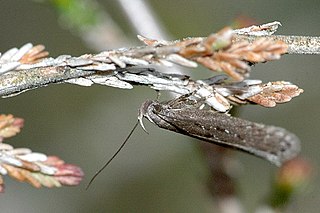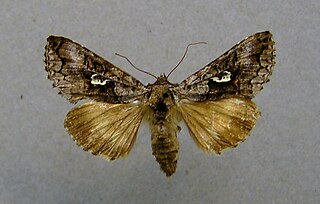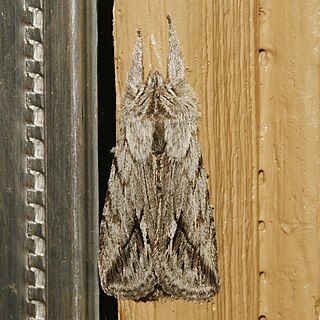
Botrytis cinerea is a necrotrophic fungus that affects many plant species, although its most notable hosts may be wine grapes. In viticulture, it is commonly known as "botrytis bunch rot"; in horticulture, it is usually called "grey mould" or "gray mold".

Spiraea, sometimes spelled spirea in common names, and commonly known as meadowsweets or steeplebushes, is a genus of about 80 to 100 species of shrubs in the family Rosaceae. They are native to the temperate Northern Hemisphere, with the greatest diversity in eastern Asia.
The hybrid elm cultivar Ulmus × hollandica 'Cinerea' was first listed by George Lindley in 1815, as Ulmus cinerea, the Ash-coloured Elm, and later by the André Leroy Nurseries, Angers, France, in 1856. It was distributed as Ulmus cinerea by the Baudriller nursery, Angers, and as Ulmus montana cinerea by Louis van Houtte of Ghent. A specimen in cultivation at Kew in 1964 was found to be U. × hollandica, but the tree at Wakehurst Place remains listed as U. glabra 'Cinerea'.
Ugiodes is a genus of moths in the family Erebidae.

Neofaculta ericetella is a moth of the family Gelechiidae. It is found in Europe and Asia Minor.

Syngrapha interrogationis, the scarce silver Y, is a moth of the family Noctuidae. It is found in northern part of the world including Alaska, Canada, Iceland, Europe, Siberia, the Pacific Northwest region of the United States, and Northeast Asia.
Micrulia is a genus of moths in the family Geometridae.

Agrotis cinerea, the light feathered rustic, is a moth of the family Noctuidae. The species was first described by Michael Denis and Ignaz Schiffermüller in 1775. It is found in southern and central Europe, northern Turkey, the Caucasus, western Turkmenia and Central Asia.
Acronicta cinerea is a moth of the family Noctuidae. It is found from northern Germany, Poland, Slovakia, the Czech Republic, the Baltic, southern Finland, Belarus, Ukraine, western Russia up to Uralsk and Guberli.
Coleophora albicostella is a moth of the family Coleophoridae. It is found from Latvia to the Iberian Peninsula, Italy, Greece and Cyprus.

Furcula cinerea, the gray furcula moth, is a moth of the family Notodontidae. The species was first described by Francis Walker in 1865. It is found in the United States, southern Canada and the Northwest Territories.
Pingasa cinerea, the tan-spotted grey, is a moth of the family Geometridae. The species was first described by William Warren in 1894. It is found in the Australian states of New South Wales, Queensland, Tasmania and Victoria.
Micrulia cinerea is a moth in the family Geometridae. It is found on the Moluccas.

Ancylis geminana, the festooned roller, is a moth of the family Tortricidae. It was described by Edward Donovan in 1806. It is found in most of Europe and has also been recorded from North America. The habitat consists of fens, marshes and damp heathland.
Ischnarctia cinerea is a moth of the subfamily Arctiinae. It is found in the Democratic Republic of Congo, Ethiopia, Kenya and Tanzania.
Ugia cinerea is a species of moth in the family Erebidae. It is found in Gabon.
Ugiodes vagulalis is a species of moth in the family Erebidae. It is found in Madagascar.

Hakea cinerea, commonly known as ashy or grey hakea, is a shrub in the family Proteaceae native to areas along the south coast in the Goldfields-Esperance region of Western Australia. It is a showy ornamental species bearing creamy-white flowers aging to orange with contrasting ash coloured grey-green leaves.
Epidemas cinerea is a species of cutworm or dart moth in the family Noctuidae. It is found in North America.

Pleromelloida cinerea, the ashy pleromelloida, is a species of moth in the family Noctuidae. It is found in North America.








